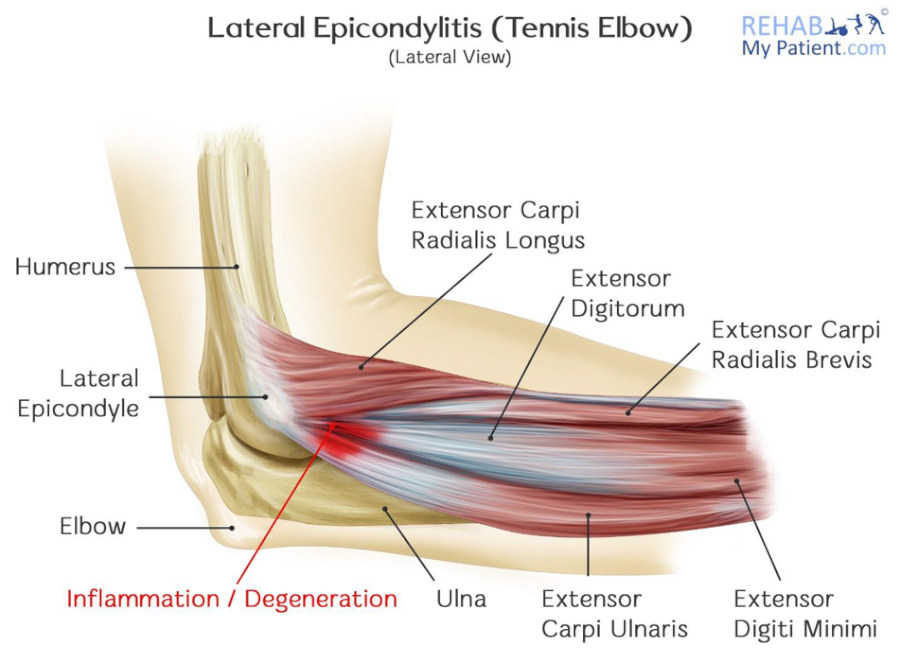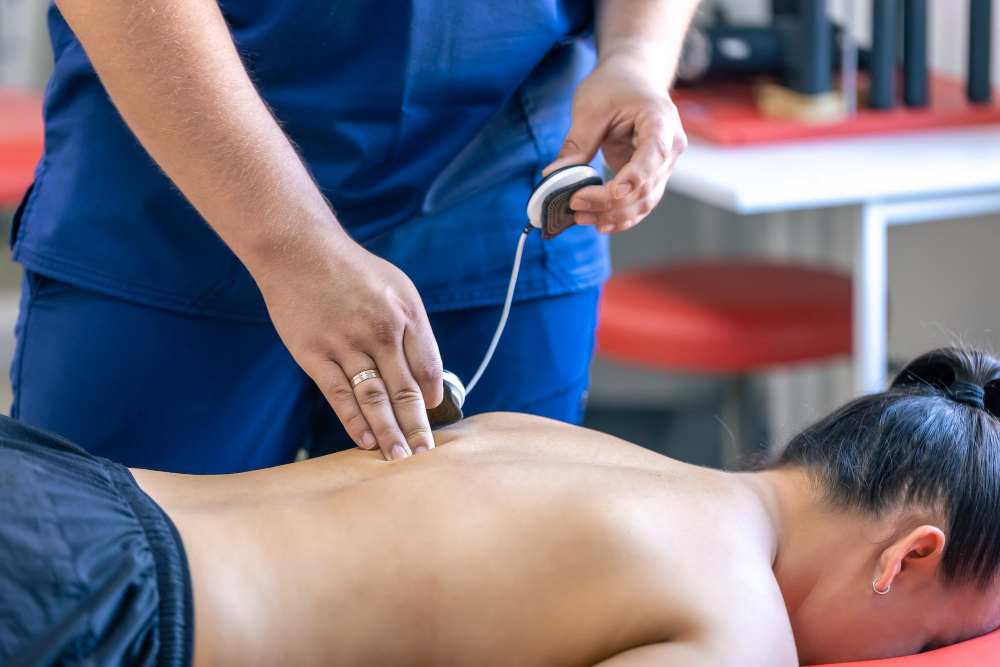Tennis elbow can is more common than you think and may not have anything to do with playing tennis or other racquet sports. Tennis elbow affects 1-3% of the UK every year and those between 35-54 are more likely to suffer. It can last between 6 months to 2 years depending on the severity of the injury, with 90% recovering in less than 12 months.
The pain and weakness from tennis elbow may make it difficult to perform certain activities such as;
- Shaking hands or gripping an object
- Turning a doorknob
- Holding a coffee cup
- Lifting a kettle or saucepan
- Repetitive computer mouse use
If you would like to learn more about tennis elbow, the causes, symptoms and how you can treat it continue reading.

What is tennis elbow?
Tennis elbow (known as lateral epicondylitis) is a painful condition within the tendons of the elbow caused by overusing the joint. Playing tennis and other racquet sports can cause this condition, but there are various other activities and sports that can place you at risk. Many people with this condition participate in some type of activity or job that requires vigorous or repetitive use of the muscles in the forearm, for example, plumbers, painters, carpenters or cooks, and they are often more prone to developing symptoms.
What causes tennis elbow?
Tennis elbow occurs when the tendons joining the forearm muscles along the outer part of the elbow become inflamed or degenerate. The forearm tendons and muscles respond negatively from overusing the joint. Repeatedly performing the same movements over and over can irritate the tendon insertions causing microtears, which leads to tenderness and pain on the outer part of the elbow. The pain associated with tennis elbow may radiate from the outside of your elbow into your forearm and wrist.
Symptoms of tennis elbow
The pain of tennis elbow can range from extremely mild to a severe pain that can be felt even when you are still. Common symptoms of tennis elbow include:
- Pain on the outside of your elbow – this may radiate down your arm when lifting
- Pain when gripping objects such as mug, kettle and other small objects
- Pain when twisting your foram
How to Treat Tennis Elbow
1. Stop aggravating your arm pain
This might sound obvious, but identify the movement that is causing the pain. It is usually a repetitive movement such as mouse clicking, carrying shopping, gripping an object or playing a certain sport. When you identify the causative factor, reduce or stop the movement.
2. Rest
The first step in the recovery process is to allow your arm the time needed to rest. Stop participating in sports or any heavy work activities for at least a few weeks.
3. Ice and/or Heat
Contrast bathing is an excellent way to reduce inflammation. You can do this by applying ice to the outside of your elbow, followed by heat for about 10 minutes each. You can use either or both. Make sure you wrap the ice and/or heat in a towel to prevent any burns.
Related reading: RICE: Rest, Ice, Compression, Elevation
4. Check Your Equipment
If you are participating in any racquet sports, you might need to have your equipment checked to make sure it fits properly. Racquets that are stiffer or looser-strung can reduce the amount of stress placed on the forearm, which means they won’t have to work as hard. If you are using an oversized racquet, change to a smaller head and see if that helps.
Using an electric screwdriver, as opposed to a conventional one, can help relieve symptoms from the repetitive rotational movement.
5. Use a Coach
Seek advice from a coach on correct technique for your sport, as poor technique can put your arm and elbow in a mechanically poor position, leaving it at risk of tennis elbow.
6. Osteopathy or Physiotherapy
Specific exercises prescribed by a practitioner are beneficial for strengthening and stretching the muscles within the forearm. They can also perform ultrasound therapy, muscle-stimulating techniques and massage to improve healing within the muscle.
8. Use a Tennis Elbow Support
A tennis elbow support fits below the elbow, and creates what is known as a “false origin”, in that it makes your arm think that the tendons are joining further down your arm. This helps to reduce the symptoms by allowing the tendons and the muscles to rest. Your practitioner can advise you on how to fit the support properly.
9. Check Your Computer Posture
Ask a colleague to take a photo of your side profile at work, take that picture in to see your practitioner, and they will guide you on good computer set-up.
If you would like to speak to one of our experts and get some more advice on how to treat your tennis elbow, call one of clinics or drop us an email on contact@carltoddclinics.com





